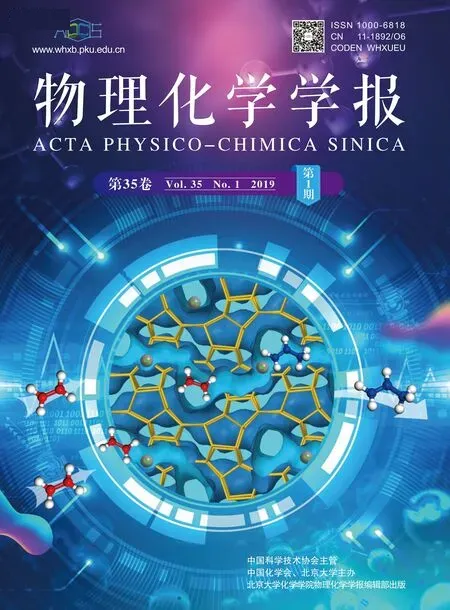Probing the Controlled Oxidative Etching of Palladium Nanorods by Liquid Cell Transmission Electron Microscopy
DONG Ganxing, JIN Chuanhong
State Key Laboratory of Silicon Materials, School of Materials Science and Engineering, Zhejiang University, Hangzhou 310027,P. R. China.
Abstract: Herein, we report an in situ study of a microscopic process of oxidative etching of palladium nanorods using liquid cell transmission electron microscopy. Oxidative etching is a universal corrosion phenomenon in the natural environment, and has become an effective tool in the fields of materials and nano-science to precisely tailor product sizes. For some noble metal nanocrystals with shape and chemical anisotropy, oxidative etching selectively occurs on specific sites or facets of the nanoparticles and could change the anisotropy. To study the behavior of anisotropic noble metal nanocrystals, it is easier to directly observe the dynamic etching of nanocrystals in solution. Liquid cell electron microscopy is a rapidly developing and powerful technique, and it allows the study of dynamic events occurring in the liquid phase with sub-nanometer resolution and can be used to track the dynamics of reactions in real-time. By recording the changes in morphology and quantitatively analyzing variations in dimensions could allow us to clarify the mechanism involved in the oxidative etching of palladium nanorods. By changing the solution properties, the oxidative etching behaviors of the palladium nanorods could be effectively controlled. Because of the higher chemical reactivity of the apex of the palladium nanorods, oxidative etching preferentially proceeded along the longitudinal direction, showing strong anisotropic behavior. The decrease in the length of the nanorods was more rapid than the decrease in their diameter, and the aspect ratiodecreased continuously throughout the etching process. An isotropic-like etching was observed when the reaction was performed in an ultrathin solution, where the diffusion of reactants and dissolved agents were inhibited due to the confinement effect. In this case,the palladium nanorods kept their rod shape and aspect ratio before being completely dissolved during the etching process.Furthermore, we demonstrate that the tip-deposition of gold can effectively protect the tips of the palladium nanorods from oxidative etching. Contrary to the previous experiment without gold deposition, oxidative etching selectively took place on the lateral sides. The palladium nanorods became progressively thinner and the aspect ratio continuously increased during the etching process. Previous studies on the oxidative etching of nanocrystals by liquid cell electron microscopy focused on the dissolution kinetics of metal nanocrystals with symmetrical structure. The results presented here show successful in situ monitoring of the controlled oxidative etching process of anisotropic noble metal nanocrystals. The presented results should be important for the precise structural tuning of noble metal nanocrystals for various practical applications.
Key Words: Palladium nanorod; Oxidative etching; In situliquid cell electron microscopy; Anisotropy;Limited-diffusion; Tip protection


